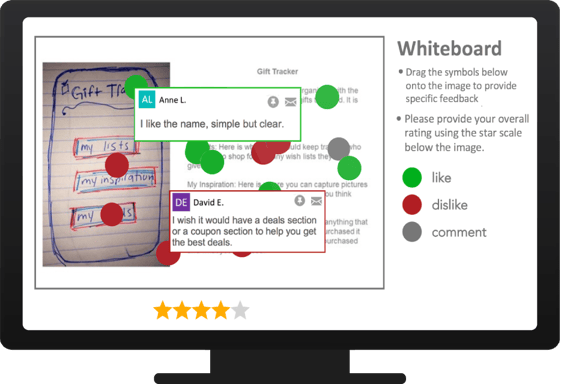Forward-thinking companies are increasingly turning to online qualitative approaches in order to build better products, create better consumer experiences, and launch more successful marketing campaigns. But what is driving that change?
Main Takeaways:
- Explore the key differences between online and in-person qualitative results you can get given today’s agile online community capabilities
- Learn the three of the main drivers that are convincing today’s smartest companies to modernize their approach to research
- Get the facts teams use to help convince their organization to make the change to agile online communities
In our increasingly personalized world, customers are looking for brands and products that fit their needs—from how they engage with websites and marketing content to their experience buying and using products or services.
Meeting and exceeding those expectations on a regular basis starts with understanding precisely what your customers and prospects are thinking—what their pain points are, what they want out of your products, the kinds of imagery and messages that are attractive to them, etc.
Unfortunately, it’s not enough to gauge customer sentiments at a single point in time and hope you’ll get all of the insights you need to build the ideal products, services or marketing programs. Building the best products and delivering great experiences requires multiple touchpoints to learn and iterate with your customers. To this end, today’s leading organizations are turning to iterative solutions like Digsite to build solutions and learn simultaneously.

Research Then vs. Research Now
In the past, when companies wanted to collect product or campaign-specific data from their target customers, they’d generally convene focus groups or ethnographic research in what was a time-consuming, resource-intensive process. Members of the marketing and research teams would have to be dispatched to a specific location. The consumers who participated in the research would also be selected based on geography—which might not result in the most accurate data for companies that conduct business nationally and internationally.
What’s more, since research participants were in the same room with the moderator, they hesitated to give truly honest answers out of a desire to please the moderator or fear of embarrassment. Making matters worse, once the research wrapped up, researchers were generally unable to ask follow-up questions to further refine their findings.
.png?width=600&name=Teal%20Simple%20Comparison%20Chart%20(1).png)
Online qualitative research has completely changed the game. Companies that use agile online communities can convene digital spaces filled with high-quality customers from all over the country. In other words, they can reach the precise people they hope to sell to.
Since no travel is involved and physical locations don’t have to be rented, agile online communities are much more affordable and faster than traditional methods. Companies that use the new approach get better data, too, because research proves that we’re more likely to be honest answering questions when we’re online. Unlike in-person research, agile online communities enable researchers to ask follow-up questions and drill down into the specifics of whatever they’re trying to uncover.
The benefits of agile online qualitative are truly transformative. But just because a new technology emerges doesn’t necessarily mean it is right for every company. With that in mind, let’s take a look at three of the main drivers that are convincing today’s smartest companies to modernize their approach to research and give agile online communities a try.
1. Companies have a desire to move faster and become more agile
Today, a lot of internal pressure is forcing companies to move faster and operate in a more agile manner. When you’re moving quickly while still relying on the same research approach companies used decades ago, it’s nearly impossible to get to know your customers on any deep level.
Online qualitative research goes hand-in-hand with agile teams. As companies attempt to design, build and learn from consumers simultaneously, they ultimately come across agile online communities and deploy them immediately.
2. Companies simply believe “there has to be a better way”
Many companies are simply sick of paying too much money for research. They also think traditional research takes too long—and look for ways to expedite the process.

Other companies might not even be sure of what different research tools are available and what kinds of features they should look for. They’re just convinced there has to be a better way.
They’re right.
3. Companies become educated on the promise of online qualitative
Many organizations don’t know what capabilities online qualitative brings to the table. They don’t realize they can often get better insights than with in-person research alone.
Once they learn about the benefits, they realize what they’ve been missing out on:
- It’s more than a focus group. In addition to asking group questions, research can also include videos, pictures and one-on-one follow-ups with moderators. This allows you to learn more and follow-up based on what you learned. There’s also whiteboard image markup, randomized activities, fill-in-the-blank stories and more that give you higher quality responses. And the research is done in context, in a more natural environment than a focus group room.

- It’s faster and cheaper. Since online qualitative is facilitated via the internet, companies that use the modern approach save a ton of money and time. This enables them to iterate quicker, bringing better products to market faster.
- It’s more accurate. With agile online communities, you’re not limited by geography. Leading solutions have built-in social recruiting tools that enable you to talk to specific audiences—the exact people you’re looking to talk to. As a result, the data you collect ends up being more precise.
To illustrate the promise of online qual: One of our clients—a young food and beverage company that has been very successful to date—released a new product without much research. They tested the product itself but they didn’t test the packaging or the name. When the product was released , it wasn’t well-received. The company realized they were moving quickly, but without the right data. This approach actually slowed them down.
Ultimately, they decided to use Digsite to see what their target audience thought of the product while they were developing it. After learning why the product was performing poorly, how to improve it, and verifying their improvements were what consumers had in mind – they launched changes, and the product performed better in-market.
Selling the Change Internally
Many people—and companies—resist change. If something’s not broken, why fix it?
In the case of online qualitative, some teams are hesitant to try a new approach because they’re used to in-person research and see it as the gold standard for understanding consumers.
So how exactly can you sell the change internally? Here are some facts you can use to help convince your team to make the change:
- It increases productivity. Teams will be able to reclaim a lot of time when they use agile online communities. This time can be invested in other mission-critical areas of operations.

- You can conduct more research. Since agile online communities are a more affordable option, you’ll have more money in your budget to conduct further research. You’ll be able to accomplish so much more than usual with better data.

- You get better results. With travel and geographical constraints removed from the equation, you can find the participants you want. And, with the ability to capture videos and follow-up with participants as you learn, you will be able to ask more “why” questions and learn more.

- Decisions are made faster. Companies that use agile online communities can make decisions in the moment as they learn—not weeks later. This enables them to bring products to market faster and launch successful marketing campaigns in less time.

From speed to cost-effectiveness to data accuracy, the benefits of online qualitative research speak for themselves.
If you're experiencing the challenges that drive companies to better, faster online qualitative research - you're not alone. Check out our recent webinar, "How to Shift from In-Person to Agile Qualitative Research" to learn recent advances in online qualitative technology and the variety of agile tools and methods available today. You will also get an approach for when and how to convert your research from in-person to agile qualitative methods.





